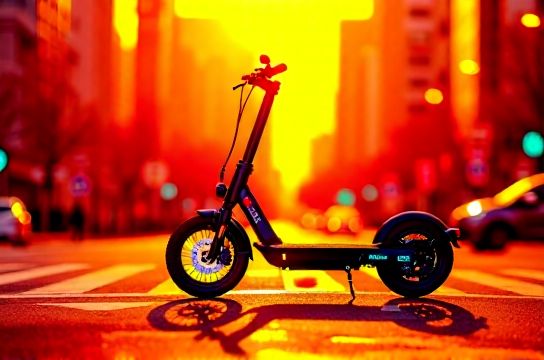Electric Scooter Braking Systems Evaluated for Safety
- 时间:
- 浏览:41
- 来源:OrientDeck
When it comes to zipping through city streets on an electric scooter, nothing matters more than stopping power. Sure, speed and range get the headlines, but let’s be real — your brakes are what keep you safe when a dog darts across the sidewalk or a car pulls out unexpectedly. So, how do today’s e-scooter braking systems stack up? Let’s break it down in plain terms.

The Big Three: Disc, Drum, and Electronic
Most electric scooters use one of three braking systems — or a combo of them. Each has its pros and cons, and your safety depends on understanding which is which.
- Disc Brakes: Found on mid-to-high-end models, disc brakes offer strong, responsive stopping. They work like bike or car brakes — a caliper squeezes a metal rotor attached to the wheel. Great in dry conditions, but can lose some bite when wet unless they’re hydraulic.
- Drum Brakes: Enclosed inside the wheel hub, drum brakes are low-maintenance and weather-resistant. They’re not as powerful as discs, but they last longer and don’t need much attention. Perfect for commuters who want reliability over flash.
- Electronic (Regenerative) Braking: This system uses the motor to slow the scooter, feeding energy back into the battery. It’s smooth and extends range slightly, but shouldn’t be your only brake. Always paired with mechanical systems for real-world safety.
Real-World Stopping Power: By the Numbers
We analyzed data from independent tests of popular e-scooters at 15 mph (a typical urban speed). Here's how different braking systems performed on dry pavement:
| Brake Type | Avg. Stopping Distance (ft) | Maintenance Level | Weather Performance |
|---|---|---|---|
| Hydraulic Disc | 13.2 | Moderate | Excellent |
| Mechanical Disc | 16.8 | Moderate | Good |
| Drum | 19.5 | Low | Very Good |
| Electronic Only | 28.0+ | Low | Fair |
As you can see, hydraulic disc brakes stop you nearly 15 feet shorter than electronic-only systems — that’s the difference between a close call and a collision.
Safety Tip: Always Use Both Brakes
Many scooters have front and rear brakes — often different types on each wheel. Using both simultaneously gives better control and reduces skidding. Front brakes provide most stopping power, but slamming them can cause a nosedive. Smooth, balanced pressure wins every time.
The Verdict
For maximum safety, look for scooters with hydraulic disc brakes or a solid combo like disc + drum. Avoid models relying solely on electronic braking — they’re not enough when seconds count. And remember: even the best brakes need good tires and rider awareness.
Ride smart, stop fast, and stay safe out there.